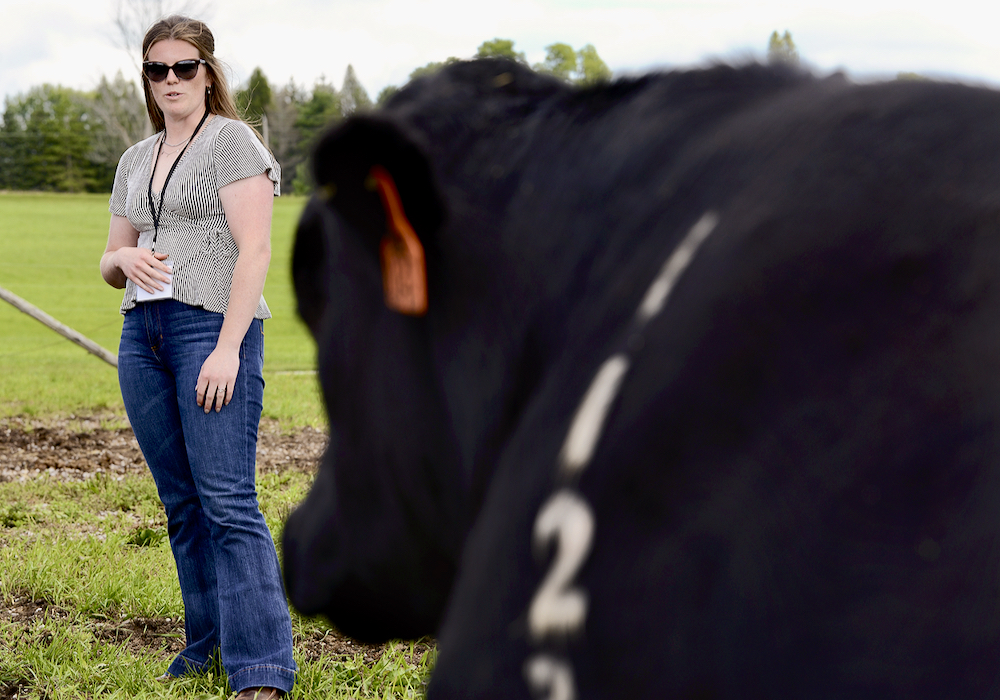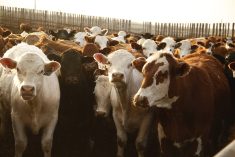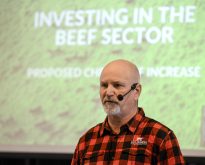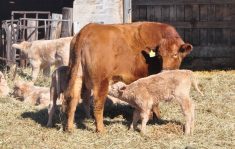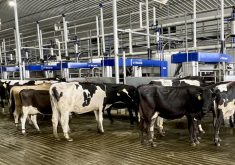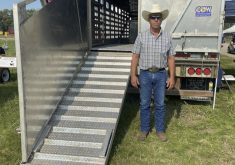Jim Whitley is employing his automotive auditing systems skills to drive his cow-calf operation goals.
“Being farmers, it’s always about costs, and we’re always driven by cost,” said the fourth-generation farmer and former Honda employee. “So, I always tried to save money, even if a deadline got missed.”
Why it matters: A recent BFO cow-calf tour gave producers an opportunity to learn how their colleagues have used genetics and regenerative practices to boost the bottom line.
Read Also
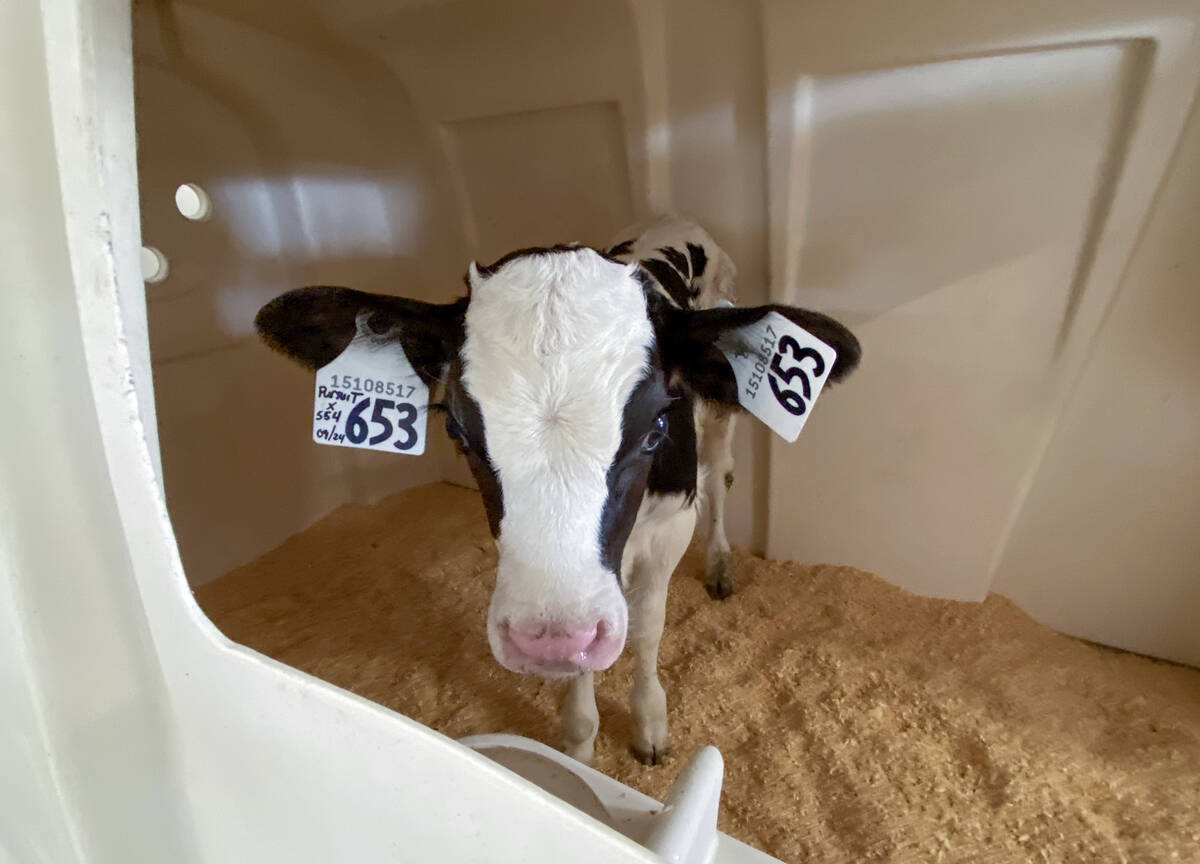
Lactanet turns methane expertise into business opportunity
Lactanet’s new fee-for-service breeding tool initiative to reduce greenhouse gas emissions in Canadian and Swiss Holstein herds will launch in April 2026.
It took Whitley a while to realize a structured and goal-orientated approach to beef farming could keep costs in hand and allow him and his wife, Myrna, to achieve their five-year plan to grow from a mixed cow herd of 15 to a 50-head purebred cow-calf operation near Creemore.
“We’re planners; we plan for the year, the week, the day,” he said. “You can plan all your life, but you need to be ready to roll with the punches.”
[READ MORE] Funding, quality industry programs play a big part in on-farm beef sector investments
Whitley used his former employment experience to enhance farm productivity and described it to attendees at the Beef Farmers of Ontario cow-calf school tour in late August.
After 30 years with Honda, Whitley retired in 2017. He then applied the Quality, Cost, Man/Morale, Safety and Environment (QCDMSE) and Plan, Do, Check, Action (PDCA) protocols used by the auto manufacturer to the farm’s workflow and goals. PDCA allows him to measure success or failure against a baseline and follow up with new action plans to help his business.
QCDMSE principles influence the big-picture farm plan. For example, Whitley aligned with Doug Briggs, of Echo Spring Charolais, to achieve his herd quality goals. To develop a breeding program foundation, Whitely purchased seven of Brigg’s purebred heifers to add to their existing herd of 4-H purebred heifers and Red Angus.
“They (Red Angus) worked phenomenally,” he said. “You know, when you have a cow this big and a calf back-to-back in October, it makes you feel pretty good.”
The farm hit financial goals through a mix of cash cropping, transitioning most of the land into pasture and hay, and custom fencing.
In 2019, the couple bought the Trott Farm, a 47-acre operation that fit son Clay’s burgeoning freezer beef business.
“The freezer beef is going extremely well. We’re going to sell half of those (cattle) as freezer beef at a bit of a premium, and our customer base is growing,” said Whitley.
Between the two farms and some rented land, the Whitleys have 283 acres, mostly in pasture or hay, which they rotationally graze and maintain regenerative practices.
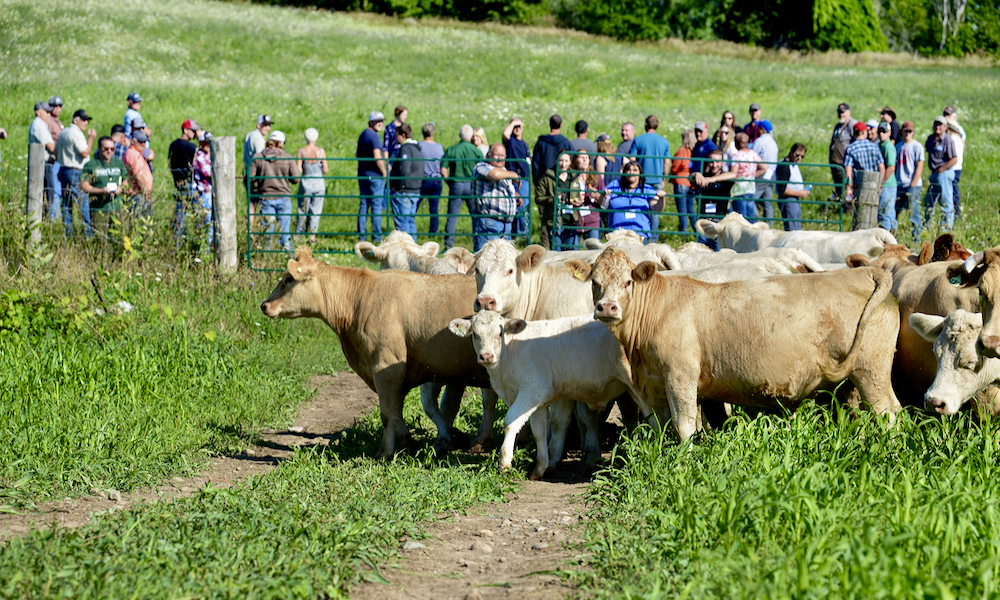
Whitley said feeding is 180 days each way, with 10 bales per cow through the winter and 120 home farm acres split into 22 pastures for five acres per cow.
“We’re not there yet (for grazing) on the 180 days,” he said. “We supplemented (this year).”
The farm uses sacrifice pastures and hay when fields need more time to regenerate.
The breeding program focuses on terminal sires, 100-pound calves and quiet and easy temperaments.
Interval calving is a priority, he said, adding the first cycle had 30 of 46 calves on the ground this season with 40 of 46 by the end of the second. He said the artificial insemination (AI) flow worked well but this season, they alternated between two bulls because an overload of spring fencing jobs took priority over AI.
“We did that for two cycles for six weeks, so ask me next year if that process worked,” he said. “The AI worked phenomenal.”
They calve in April and May and market 25 head as grass-fed and sell 10 to 15 of their top steers as calves or yearlings, depending on their feedstock.
Whitley translated his auditing skills into becoming a Verified Beef Production Plus (VBP+) auditor and certifying his farm, which improved production and provided structure and better efficiency.
Michaela Stoneman and her husband, Chris, live on her family’s JPD Angus Mitchell’s Square farm. It supplies part of the summer’s 300 acres of pasture and hay and winters the heifers.
They use a mix of AI and live covers and keep a few mature herd sires. The breeding program uses natural heat and AI for anything that comes into season in the first 21 days. That has a better than 80 per cent success rate.
“This heifer pen was exceptional this year; of the 17 animals we AI’d, we got 15. There were three we waited on to let a new bull we purchased from the west (breed),” Stoneman said.
Running their own AI program on a natural heat cycle allows for a flexible breeding schedule, ensuring there are always eyes on the cattle, she said. For example, they breed heifers twice because it’s difficult to tell where they are in the schedule.
Stoneman said Merit Aftermath, their newest bull from Saskatchewan, has a balanced EPD profile with low birth weight, above-average growth, docility and foot traits in the top 10 per cent for the breed and has an easygoing temperament.
“We’re pretty excited about that. We like curve benders, really balanced EPD profiles and phenotype as well,” she said. “This is his first breeding season, so we’ll draw semen on him this year and use him more heavily in our program this coming breeding season in March.”
Stoneman said they moved from a fall 10-way killed vaccination application during weaning to a modified live vaccine application six weeks pre-breeding to increase conception rates.
“They say that if you do that, in that window pre-breeding, you have less chance of having early embryonic losses during the breeding season,” she said. “So we’ve really increased our conception rate that way, as well, paired with good nutrition and heat detection.”
Heifers are vaccinated 10 weeks pre-breeding with a six-week pre-breeding booster for leptospirosis. In the fall, the cows get Scour Bos 10 weeks pre-calving, and heifers get a booster at four weeks to cover calves at birth.
The calf program is relatively intense but has yielded positives in health.
The calves are weighed and given colostrum, selenium, vitamins A and D and Inforce at birth. Before they go to grass, they’re vaccinated with Pyramid five-way live, Presponse and Covexin and given a booster three weeks later.
The rotational grazing schedule has cows on the pasture from three days up to a week, depending on size of the field. At approximately 12 acres, the largest field is divided and has slightly longer grazing periods in the spring to keep the grass down.
This year they cut and baled it.
“Our cows stay in pretty good shape with our land base and the nutrition,” Stoneman said.




